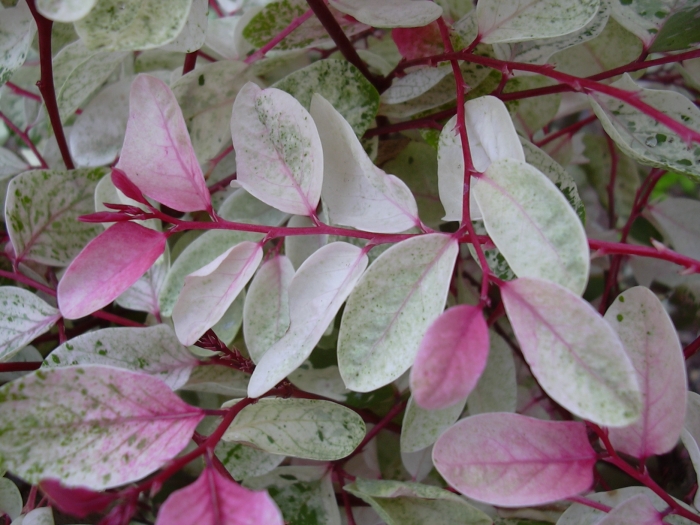Snowbush
(Breynia disticha)
Snowbush (Breynia disticha)
/
/

Forest & Kim Starr
CC BY 3.0
Image By:
Forest & Kim Starr
Recorded By:
Copyright:
CC BY 3.0
Copyright Notice:
Photo by: Forest & Kim Starr | License Type: CC BY 3.0 | License URL: https://creativecommons.org/licenses/by/3.0 | Uploader: BotMultichillT | Publisher: Wikimedia Commons | Title: Starr_030612-0049_Breynia_disticha.jpg | Notes: == Beschreibung == {{Information |Description=Madeira,_Palheiro_Gardens_-_Brugmansia_sanguinea_(westliches_Südamerika) Engelstrompete |Source=own work |Date=2008-3-24 |Author=[[User:Hedwig Storch|Hedwig Storch]] |Permission= |other_versions= }} ==






























Estimated Native Range
Summary
Breynia disticha, commonly known as Snowbush, is an evergreen shrub native to the open forests, scrublands, and coastal areas of the South Pacific, including New Caledonia and Vanuatu. It typically grows to a height and width of 2-4 feet (0.6-1.2 meters), featuring a mounded form with branches that spread outwards. The plant is notable for its variegated leaves that are green, white, and sometimes pink, which create a striking visual effect. Snowbush produces inconspicuous greenish-white flowers, followed by small, round, purple fruits that are seldom seen in cultivation.
Snowbush is valued for its ornamental foliage, which adds a splash of color to tropical-themed gardens, mixed borders, and as a container plant. It is relatively easy to maintain, requiring only occasional pruning to keep its shape. In cultivation, it prefers full sun to part shade, consistent moisture, and well-draining soil. While it is not drought-tolerant, it can withstand short dry periods once established. Snowbush can be susceptible to pests like spider mites and mealybugs, and may suffer from root rot if overwatered. It is not typically invasive outside its native range but should be monitored as it can spread through seed dispersal.CC BY-SA 4.0
Snowbush is valued for its ornamental foliage, which adds a splash of color to tropical-themed gardens, mixed borders, and as a container plant. It is relatively easy to maintain, requiring only occasional pruning to keep its shape. In cultivation, it prefers full sun to part shade, consistent moisture, and well-draining soil. While it is not drought-tolerant, it can withstand short dry periods once established. Snowbush can be susceptible to pests like spider mites and mealybugs, and may suffer from root rot if overwatered. It is not typically invasive outside its native range but should be monitored as it can spread through seed dispersal.CC BY-SA 4.0
Plant Description
- Plant Type: Shrubs
- Height: 2-4 feet
- Width: 2-4 feet
- Growth Rate: Moderate
- Flower Color: N/A
- Flowering Season: Spring, Winter
- Leaf Retention: Evergreen
Growth Requirements
- Sun: Full Sun, Part Shade
- Water: Medium
- Drainage: Fast, Medium
Common Uses
Border Plant, Groundcover, Hedges, Potted Plant
Natural Habitat
Open forests, scrublands, and coastal areas of the South Pacific, including New Caledonia, Vanuatu, and Fiji
Other Names
Common Names: Snow Bush
Scientific Names: , Breynia nivosa, Breynia disticha, Breynia disticha f. nivosa, Phyllanthus nivosus, Breynia nivosa var. roseopicta, Breynia disticha var. neocaledonica, Breynia disticha var. nivosa, Melanthesa neocaledonica, Agave roseopictus
GBIF Accepted Name: Breynia disticha J.R.Forst. & G.Forst.